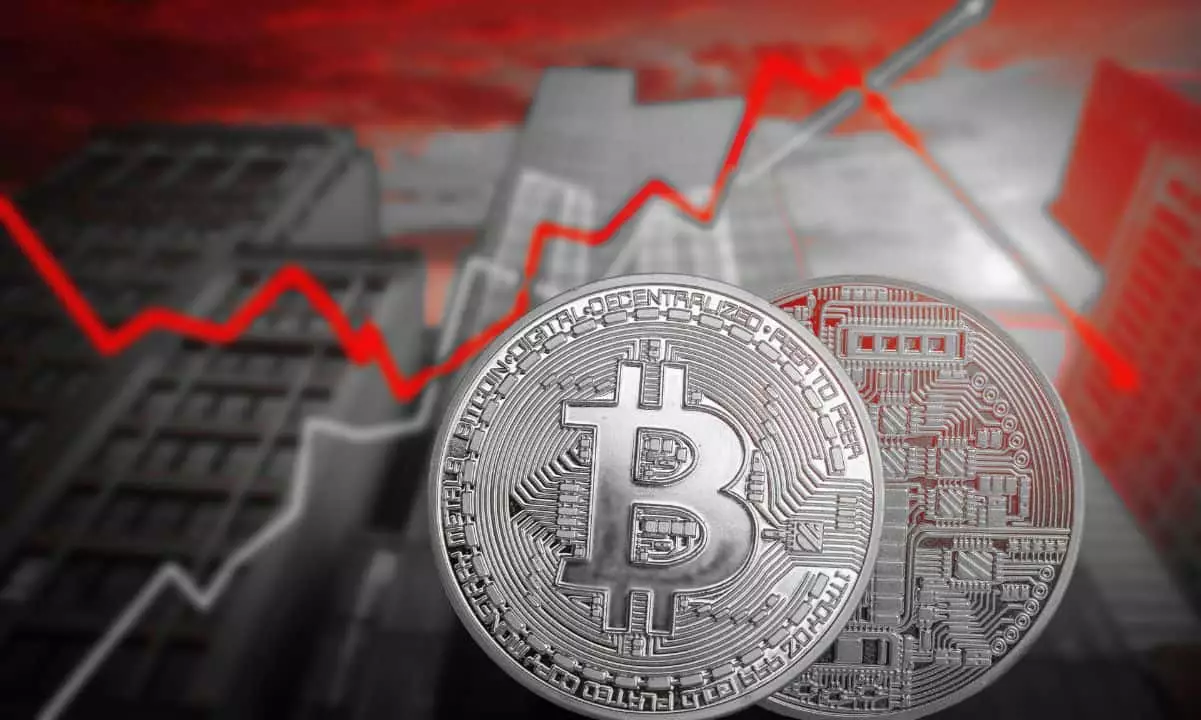As 2025 marches on, the chaotic economic landscape shaped by aggressive trade policies and fluctuating inflation is giving rise to significant conversations about the sustainability of cryptocurrencies, particularly Bitcoin. Under the administration of President Trump, who has invoked emergency powers to impose sweeping import tariffs, the mood in the financial markets has dramatically shifted. The once stagnant trade stability that characterized previous years has been replaced by a pervasive uncertainty that is driving investors to reevaluate their portfolios. While some dismiss Bitcoin as a financial experiment, its performance amid these turbulent waters suggests it is maturing into something far more significant than a mere speculative asset.
Bitcoin: A Financial Chameleon
What sets Bitcoin apart in this climate is its unique capacity to adapt—the cryptocurrency’s correlation with traditional financial assets has illustrated a fascinating dynamic. Observations from Binance Research indicate that as trade war rhetoric escalated in January 2025, Bitcoin’s correlation with equities sank into negative territory. By February 20, it was at a notable -0.32, signaling that investors were seeking refuge from traditional equities, which were exhibiting risk aversion. However, as market anxiety deepened, this relationship shifted. By March, Bitcoin’s correlation turned positive (0.47) as investors became increasingly risk-averse, showing a growing mythos around Bitcoin’s ‘digital gold’ narrative. This intriguing volatility underscores Bitcoin’s chameleonic capability to reflect shifting investor sentiment in real-time.
Macroeconomic Influences on Cryptocurrency Sentiment
When analyzing the soaring correlation between Bitcoin and equities during heightened trade tensions, it’s essential to acknowledge the macroeconomic context. The ongoing turbulence is not just confined to trade policies; inflationary pressures are mounting. The Federal Reserve’s monetary policy choices will serve as pivotal determinants of economic health, creating rippling effects across asset classes. In this volatile environment, Bitcoin exhibited surprising resilience, often holding steady or even rebounding when traditional markets faltered. Long-term holders appear unfazed, displaying a conviction in Bitcoin’s future value even during uncertain times. Such behavior is emblematic of a maturing asset, showing characteristics consistent with a safe-haven investment that defies typical market behaviors.
The Case for Bitcoin as a Safe Haven Asset
Historically, Bitcoin has demonstrated a remarkable ability to thrive during periods of economic turmoil, suggesting that it could pivot back to its original promise as a non-sovereign, inflation-resistant asset. Research from Binance hints at a conducive environment for Bitcoin’s resurgence as a safe-haven asset. As the world grapples with heightened protectionist sentiments and uncertain economic climates, the demand for alternatives to traditional stores of value could surge. Should the Federal Reserve entertain rate cuts while inflation looms high, Bitcoin might once again find itself in the crosshairs of investor interest, reclaiming its street cred as a hedge against economic instability.
Challenges Ahead in the Broader Crypto Landscape
Despite Bitcoin’s potential for resilience, the broader cryptocurrency market sits precariously at a crossroads as it faces numerous challenges. The specter of stagflation, coupled with ongoing trade wars, has put the entire market on notice. Bitcoin, for all its allure, is not immune to the macroeconomic trends at play. Continued trade tensions could sap investor confidence, but positive regulatory developments or signals of central bank easing could radically alter the sentiment. In a turbulent global economy, the crypto market must navigate a fine line between opportunities for growth and the looming threats that could destabilize the collective ambition of digital assets.
To sum up, while Bitcoin’s position within the financial ecosystem is certainly complex, its adaptability and potential resilience suggest that 2025 will be a crucial year for the cryptocurrency. The political and economic landscape wrought with uncertainty offers both risks and opportunities, and how Bitcoin capitalizes on these developments will greatly determine its path forward.
















Leave a Reply